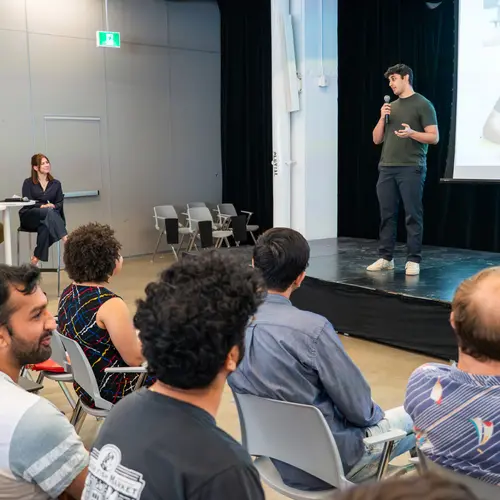
Julie Hussin
Biographie
Julie Hussin est professeure agrégée au Département de médecine de l’Université de Montréal (UdeM) et chercheuse à l’Institut de cardiologie de Montréal (ICM). Elle est titulaire d’une Chaire de recherche du Canada (niveau 2) en science responsable des données multi-omiques et préside les programmes d’études supérieures en bio-informatique à l’UdeM.
Formée en génomique statistique et évolutive, la Dre Hussin possède une vaste expérience dans l’analyse de grands ensembles de données multi-omiques provenant de cohortes de population. Ses travaux en biologie computationnelle s’inscrivent dans les domaines de la génomique médicale et de la génomique des populations, auxquels elle a apporté plusieurs avancées méthodologiques. Son programme de recherche interdisciplinaire vise à développer des outils novateurs pour la médecine de précision. Ses projets portent notamment sur l’amélioration de la prédiction et de la gestion du risque de maladies cardiométaboliques, en particulier l’insuffisance cardiaque.
Ses approches intègrent différents types de données — cliniques, génétiques, transcriptomiques, protéomiques et métabolomiques — afin de mieux comprendre les déterminants biologiques des maladies du cœur, notamment grâce à des techniques d’apprentissage non supervisé. Dans le contexte de la pandémie de COVID-19, son équipe a également dirigé le développement d’algorithmes de science des données pour analyser les données génétiques virales, soutenir la surveillance épidémiologique et étudier les interactions hôte-pathogène ainsi que l’évolution virale.
Ses travaux s’intéressent aussi à l’interprétabilité, à la généralisabilité et à l’équité des algorithmes d’apprentissage automatique appliqués à la recherche en santé. La Dre Hussin milite pour une intelligence artificielle équitable, sécuritaire et transparente dans la recherche en santé, et s’engage à favoriser l’inclusivité et la représentativité afin que ses travaux bénéficient à l’ensemble de la population.
Elle enseigne plusieurs cours de premier et de deuxième cycles en biologie computationnelle, en génétique des populations et en apprentissage automatique appliqué à la génomique. Avant de se joindre à l’UdeM comme professeure, elle a été boursière postdoctorale du Human Frontier Science Program au Wellcome Trust Centre for Human Genetics de l’Université d’Oxford (Linacre College), ainsi que chercheuse invitée à l’Université McGill.


